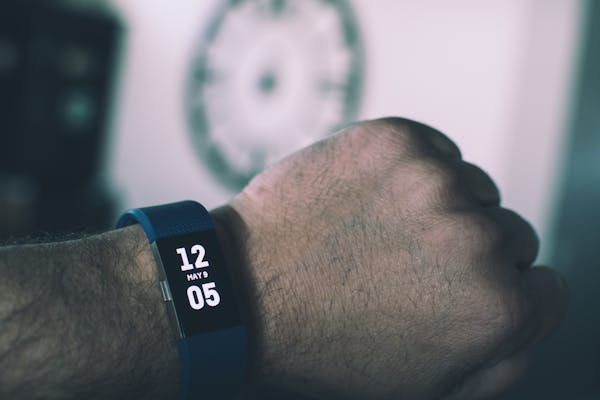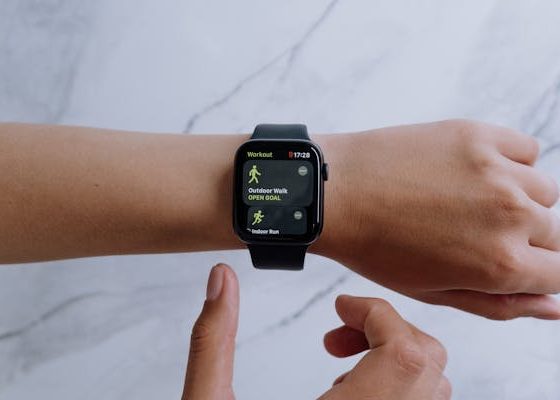
Smartwatches have become a quintessential accessory in the modern era, blending technology and fashion into a single device that sits conveniently on our wrists. From tracking fitness goals to managing notifications, these versatile gadgets have revolutionized the way we interact with technology and monitor our health. This article delves into the evolution of smartwatches, their key features, and the myriad benefits of smartwatches in our daily lives.
The Evolution of Smartwatches
Smartwatches have come a long way since their inception. The concept of a watch that could do more than just tell time dates back to the early 20th century. However, it wasn’t until the late 20th and early 21st centuries that technology advanced enough to bring these ideas to life.
Early Innovations
The first digital watches emerged in the 1970s, featuring LED displays and basic functions like calculators and games. These were the precursors to modern smartwatches, demonstrating the potential for multifunctional wrist-worn devices.
The Dawn of Modern Smartwatches
The real breakthrough came in the early 2000s with the introduction of watches that could sync with smartphones. Companies like Fossil and Sony Ericsson were among the pioneers. However, it was the launch of the Pebble smartwatch in 2013, funded through a highly successful Kickstarter campaign, that truly ignited the market. Pebble’s open-source software and compatibility with both iOS and Android set a new standard for what smartwatches could achieve.
The Rise of Major Players
Apple entered the market in 2015 with the Apple Watch, which quickly became the gold standard for smartwatches. Its seamless integration with the iPhone, stylish design, and robust app ecosystem set it apart. Meanwhile, companies like Samsung, Garmin, and Fitbit also introduced competitive products, each bringing unique features to the table.
Key Features of Modern Smartwatches
Today’s smartwatches are packed with a plethora of features that cater to a wide range of needs. Here are some of the key features that make these devices indispensable:
Health and Fitness Tracking
One of the primary benefits of smartwatches is their ability to monitor health and fitness metrics. Most modern smartwatches come equipped with sensors that track heart rate, sleep patterns, steps taken, calories burned, and more. Advanced models even offer features like ECG monitoring, blood oxygen level measurement, and stress tracking.
Connectivity and Notifications
Smartwatches keep you connected by syncing with your smartphone to deliver notifications directly to your wrist. Whether it’s emails, messages, social media updates, or calendar alerts, you can stay informed without having to constantly check your phone.
GPS and Navigation
Built-in GPS is another significant benefit of smartwatches, particularly for outdoor enthusiasts. Whether you’re running, cycling, or hiking, GPS tracking allows you to map your routes, monitor your pace, and track your progress. Some models also offer turn-by-turn navigation, making it easier to explore new places.
Music and Media Control
With the ability to store and stream music, smartwatches have become excellent companions for workouts and commutes. You can control playback, adjust volume, and even listen to music directly from your watch if it supports cellular connectivity.
Customization and Personalization
Smartwatches offer a high degree of customization, from interchangeable bands to customizable watch faces. This allows users to express their personal style and preferences, making their smartwatch a reflection of their unique taste.
The Benefits of Smartwatches
The integration of these features into a compact, wearable device brings numerous benefits to users. Here, we explore the most significant benefits of smartwatches and how they can enhance various aspects of life.
Health and Wellness
One of the most profound benefits of smartwatches is their impact on health and wellness. These devices provide real-time data that can help users make informed decisions about their health.
Activity Tracking
By monitoring physical activity, smartwatches encourage users to stay active. Features like step counters, activity rings, and workout tracking help users set and achieve fitness goals. Regular reminders to move can combat sedentary behavior, promoting a healthier lifestyle.
Heart Health Monitoring
Continuous heart rate monitoring allows users to keep an eye on their cardiovascular health. Advanced smartwatches can detect irregular heartbeats and provide early warnings of potential issues. For example, the Apple Watch’s ECG feature can detect atrial fibrillation, a serious heart condition.
Sleep Tracking
Quality sleep is crucial for overall health, and smartwatches can provide valuable insights into sleep patterns. By tracking the duration and quality of sleep, users can make adjustments to improve their sleep hygiene. Some smartwatches also offer features like smart alarms, which wake users up during the lightest phase of sleep, making it easier to start the day.
Stress Management
Many smartwatches now include stress-tracking features that monitor physiological signs of stress, such as heart rate variability. Guided breathing exercises and relaxation techniques can help users manage stress more effectively, contributing to better mental health.
Convenience and Efficiency
Smartwatches streamline many aspects of daily life, making routine tasks more convenient and efficient.
Instant Notifications
One of the key benefits of smartwatches is the ability to receive instant notifications. Whether it’s a message, call, or app alert, users can stay connected without having to pull out their phones. This is particularly useful in situations where using a phone is impractical, such as during meetings or workouts.
Contactless Payments
Many smartwatches support contactless payments through services like Apple Pay, Google Pay, and Samsung Pay. This feature allows users to make secure payments with a simple tap of their wrist, reducing the need to carry cash or cards.
Voice Assistants
Integration with voice assistants like Siri, Google Assistant, and Bixby adds another layer of convenience. Users can set reminders, send messages, control smart home devices, and more, all through voice commands.
Enhanced Safety and Security
Smartwatches can also enhance personal safety and security in various ways.
Emergency SOS
Many smartwatches have an SOS feature that can be activated in emergencies. This sends an alert with the user’s location to designated contacts or emergency services. For example, the Apple Watch can detect hard falls and automatically call emergency services if the user is unresponsive.
Location Tracking
Parents can use smartwatches to keep track of their children’s whereabouts. Some models are designed specifically for kids, offering GPS tracking, geofencing, and communication features that give parents peace of mind.
Security Features
Smartwatches often come with security features like PIN codes, biometric authentication, and remote lock capabilities. These measures help protect sensitive information and prevent unauthorized access.
Fashion and Lifestylew
Beyond their functional benefits, smartwatches also serve as fashion statements and lifestyle accessories.
Stylish Designs
With a wide range of designs, materials, and colors, smartwatches can complement any outfit. High-end models from brands like Apple, Samsung, and Garmin offer premium finishes and customizable watch faces, allowing users to express their style.
Interchangeable Bands
Interchangeable bands add to the versatility of smartwatches. Users can switch between sporty, casual, and formal bands to match different occasions, making their smartwatch a truly adaptable accessory.
Lifestyle Integration
Smartwatches can integrate seamlessly into various aspects of daily life. For example, they can control smart home devices, manage calendars, and even serve as boarding passes for flights. This integration simplifies tasks and enhances the overall user experience.
The Future of Smartwatches
The smartwatch industry continues to evolve, with new advancements and innovations on the horizon. As technology progresses, we can expect even more sophisticated features and benefits.
Advanced Health Monitoring
Future smartwatches may include more advanced health monitoring capabilities, such as blood pressure measurement, glucose monitoring, and early disease detection. These advancements could transform smartwatches into essential health tools, providing users with comprehensive insights into their well-being.
Improved Battery Life
Battery life remains a critical area for improvement. While current smartwatches offer decent battery performance, future models are likely to feature more efficient power management and longer battery life, reducing the need for frequent charging.
Enhanced Connectivity
With the rollout of 5G networks, smartwatches could become even more powerful. Faster and more reliable connectivity will enable better streaming, quicker data syncing, and more responsive apps, enhancing the overall user experience.
Greater Personalization
Artificial intelligence and machine learning will play a significant role in the future of smartwatches. These technologies will enable greater personalization, with watches learning users’ habits and preferences to provide tailored recommendations and insights.
Conclusion
Smartwatches have come a long way from their early days as basic digital timepieces. Today, they are powerful, multifunctional devices that offer a wide range of benefits, from health and fitness tracking to enhanced connectivity and personal safety. As technology continues to advance, the potential of smartwatches will only grow, making them an even more integral part of our daily lives.
The benefits of smartwatches are undeniable, offering users convenience, improved health monitoring, and a stylish accessory all in one. Whether you’re a fitness enthusiast, a busy professional, or someone looking to stay connected on the go, a smartwatch can be a valuable addition to your tech arsenal. Embrace the future of wearable technology and discover how a smartwatch can enhance your life.

